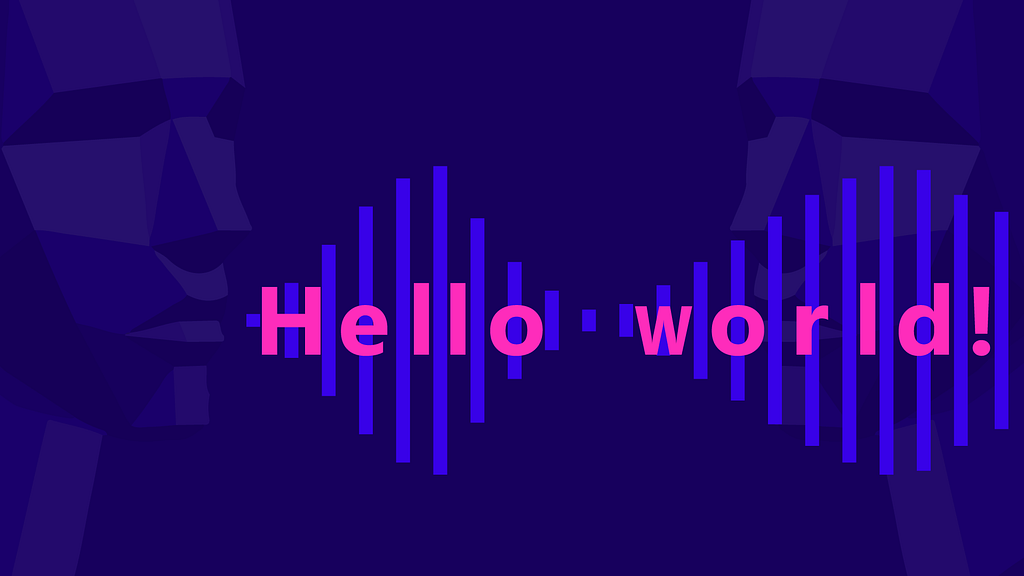Latest news about Bitcoin and all cryptocurrencies. Your daily crypto news habit.

At home, my mom had two of the best speech recognition systems. They would understand everything she said and sometimes even act based on what she said. They could do simple tasks like switching on the light, changing the channel on the television, as well as complex things like deciphering her handwritten notes to buy specific things from specific shops and even go to alternative shops in case they couldn’t find something. They could understand her tone of voice when she’d say ‘turn it off’ and switch off the gas or reduce the TV volume. These advanced speech recognition systems could do much more by gaining new skills and keep upgrading themselves as the years passed by. One of them learnt how to design buildings while the other learnt history.
All this didn’t last for long. For in a few years, my sister and I moved out of the house.
Since a really long time, human beings have been trying to make machines more usable by adding contraptions like a mouse and a keyboard, recently we added a touch interface. But what is a more convenient way of instructing a machine than simply telling it what to do? Speech is arguably one of the most natural ways of interacting with anyone or anything. Simple things like printing a file are unnecessarily hard to do with current systems (worse, if you have to configure the printer). Wouldn’t it be nice to just tell it to print this goddamn document?
My bet is that a voice interface would be one of the key components of the ultimate computer. However right now, we have some problems. Your pet can recognize you from more than a hundred yards away. Your spouse knows when you are in a sour mood simply by your expressions and body language, and responds to you accordingly. They know when they’ve done something wrong.
Your computer doesn’t know if you are sad or angry. At the moment, it doesn’t even know if you’re in the room.
The challenge for us is not to design bigger screens, better sound quality, better looking and easier to use GUIs. It is to make machines understand and respond to you based on your needs. Computers should be able to understand various verbal and non-verbal ways in which humans interact with each other on a daily basis. When I wink to my friend from across the table in a particular situation, both he and I understand exactly what we meant. A lot was said without having to say any words.
What is interesting is that many of you are already thinking of how to solve these problems. Enough technology exists to trigger ideas that could very well be possible solutions.
The best interface would be no interface. When you talk to a person, you don’t press any buttons when talking to them (or do you?). You might be conscious of their looks and gestures in the beginning, but soon the communication dominates. It is natural.
We need to design machines less like interfaces and more like humans.
We need to design machines less like interfaces and more like humans. Contrary to this, most designers focus on trying to make dumb machines easier to use by smart people. Usability is such a compelling goal, that we often don’t realize that most people don’t want to ‘use’ a machine at all. They just want to get something done. If we were asked to design a telephone, we’d probably design a better looking smartphone. However, the problem of the telephone is not to find a better way of dialing or finding contacts. People don’t want to do that. All they want is reach the other person. The interface mostly is a hindrance.
References:1. Being Digital — Nicholas Negroponte2. Designing voice user interfaces — Cathy Pearl3. Design for Voice Interfaces — Laura Klein4. Design of Everyday things — Don Norman
If you liked this article, please click the 👏 button (once, twice or more). Share to help others find it!
Voice as a natural user interface was originally published in Hacker Noon on Medium, where people are continuing the conversation by highlighting and responding to this story.
Disclaimer
The views and opinions expressed in this article are solely those of the authors and do not reflect the views of Bitcoin Insider. Every investment and trading move involves risk - this is especially true for cryptocurrencies given their volatility. We strongly advise our readers to conduct their own research when making a decision.
